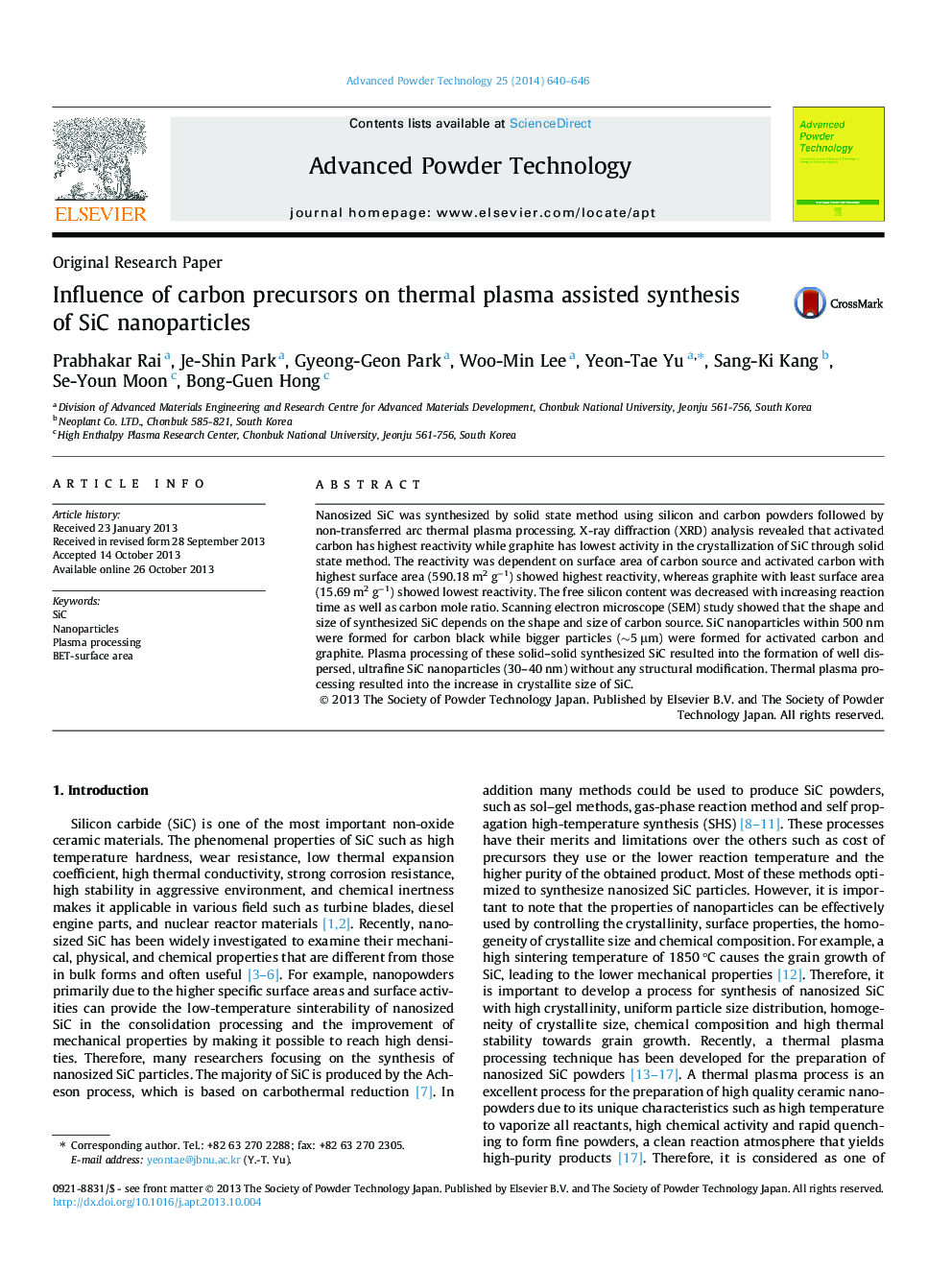| Article ID | Journal | Published Year | Pages | File Type |
|---|---|---|---|---|
| 143844 | Advanced Powder Technology | 2014 | 7 Pages |
•Effect of carbon source on formation of SiC in solid–solid synthesis was studied.•Activated carbon showed highest reactivity while graphite showed lowest.•Reactivity was increased with increasing surface area of carbon source.•Morphology of SiC was depended on the shape and size of carbon source.•SiC nanoparticles (∼25 nm) were formed in plasma without structural change.
Nanosized SiC was synthesized by solid state method using silicon and carbon powders followed by non-transferred arc thermal plasma processing. X-ray diffraction (XRD) analysis revealed that activated carbon has highest reactivity while graphite has lowest activity in the crystallization of SiC through solid state method. The reactivity was dependent on surface area of carbon source and activated carbon with highest surface area (590.18 m2 g−1) showed highest reactivity, whereas graphite with least surface area (15.69 m2 g−1) showed lowest reactivity. The free silicon content was decreased with increasing reaction time as well as carbon mole ratio. Scanning electron microscope (SEM) study showed that the shape and size of synthesized SiC depends on the shape and size of carbon source. SiC nanoparticles within 500 nm were formed for carbon black while bigger particles (∼5 μm) were formed for activated carbon and graphite. Plasma processing of these solid–solid synthesized SiC resulted into the formation of well dispersed, ultrafine SiC nanoparticles (30–40 nm) without any structural modification. Thermal plasma processing resulted into the increase in crystallite size of SiC.
Graphical abstractFigure optionsDownload full-size imageDownload as PowerPoint slide
